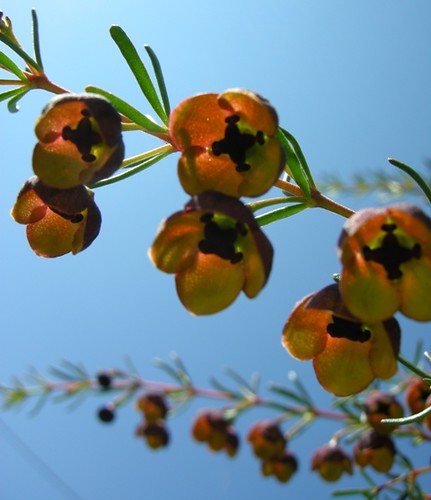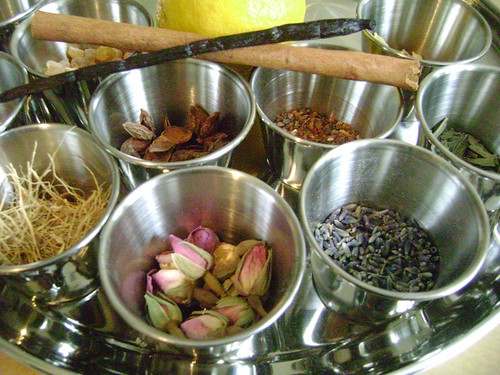Boronia
Boronia, originally uploaded by Helen Boronia McHugh.
Boronia is one of the rarest and most magical natural raw materials. It grows on the shores of Tasmania, in western Australia, and has a scent that is unusually complex and alluring: it is floral, sweet and peppery, reminiscent of yellow freesias; green and suave like violets (due to the high precentage of beta ionones, some alpha ionones and other carotenoids - which is not surprising given its orange-brown colour); and also reminiscent of raspberry, green tea and the sea shore and has a hint of hay and wood at the dryout phase.
Boronia notes are rarely found in mass-market perfumes because of its prohibitive cost; but also because it is susceptive to much adulteration, and the world production is extremely limited (Arctander mentiones under 1 metric tone per year but that was quite some time ago - I don't know if the production has gone up or down since than).
The only one perfume I could actually detect the boronia in is Diorissimo in parfum extrait (I bought a flacon some 8 years ago and it's pure heaven). Although Folavril lists it (along with mango) I can't say I've noticed it there.
Boronia serves an important role in the flavour industry more than in the fragrance, especially in berry flavours such as raspberry and strawberry and even peach - but most importantly cassis (black current). A little Boronia absolute goes a very long way in creating berry and fruit flavours, so it may be more popular in flavouring than in formulas for fine fragrance.
In my line I've used it in three perfumes - all very unusual as a result of the unique presence of this precious raw material:
Indigo, where it contributes to the mystique of cool vs. warm: violet, anise and orris against the warmth of amber, incense and spice.
l'Ecume des Jours, where it serves as the last catalyst to create a waterlily accord - the one that grew in Chloe's lungs and brought the doom on the entire cast of this surreal tale.
And Grin, where Boronia's eternal sunshine brings a stream of light into a forest clearing blooming with wild roses and smiling jasmines. I have to admit this one was largely inspired by Diorissiomo in the extrait.
Boronia is extremely rare and in fact the world supplies have reached bottom low this year already. So much so, that a supplier won't sell you more than 50gr until 2010, when the new harvest will be processed. The current price is $8,600 per kilo, the highest amount for any raw material I'm aware of other than agarwood essential oil. As a result, I had to increase the price of all of my perfumes containing Boronia - l'Ecume des Jours, Grin and Indigo.





